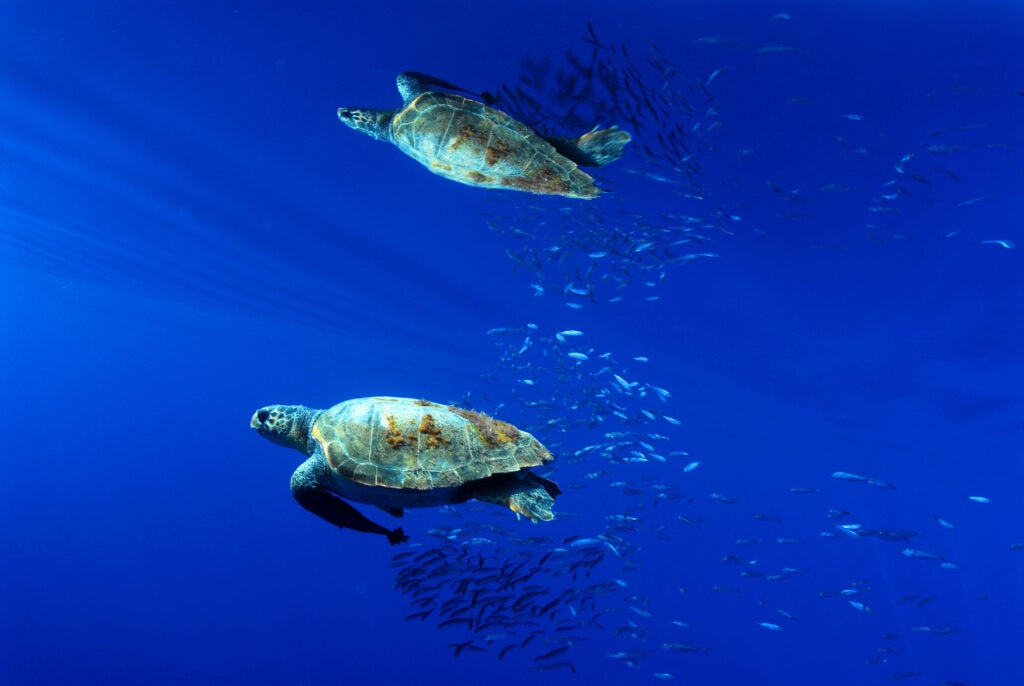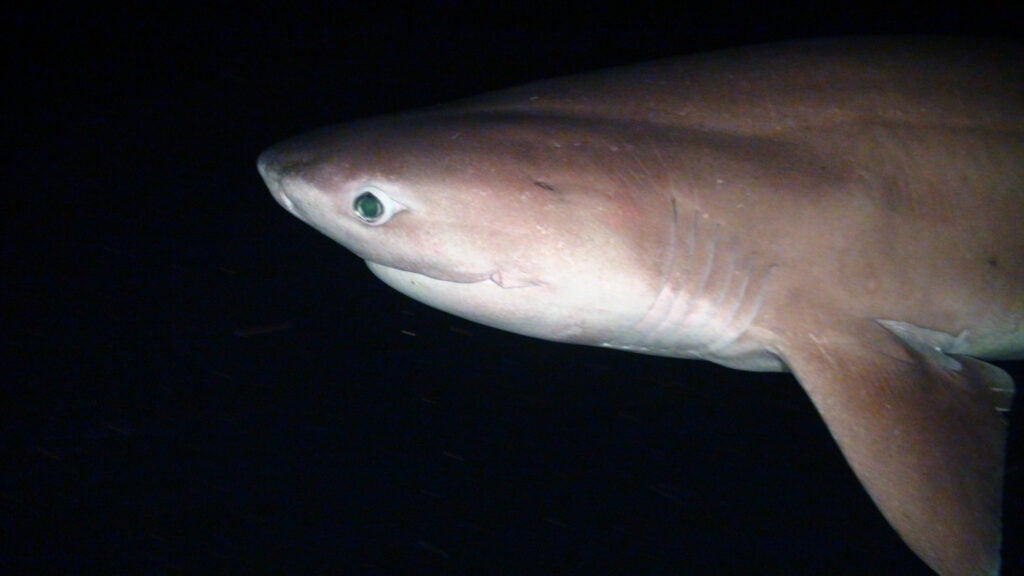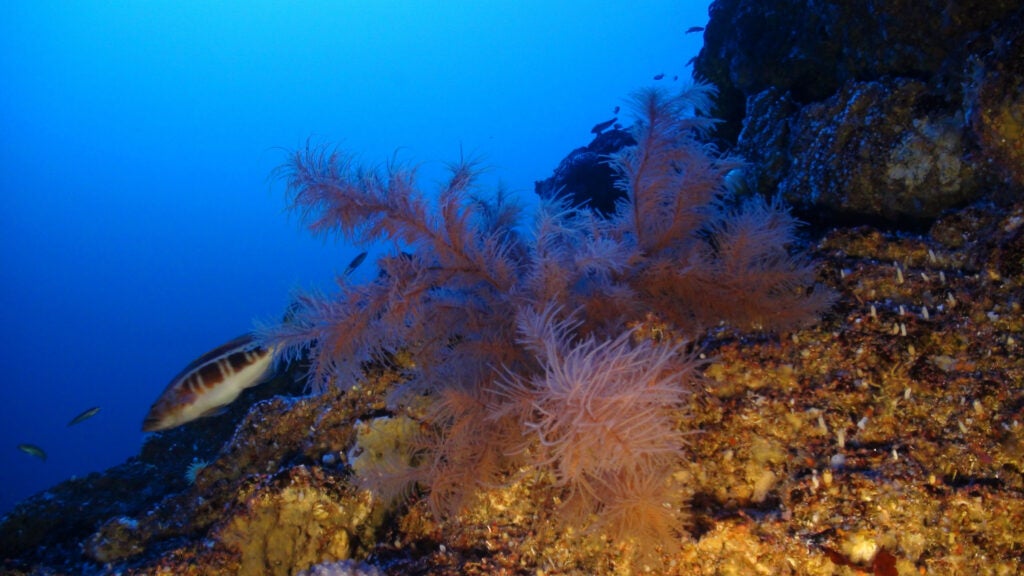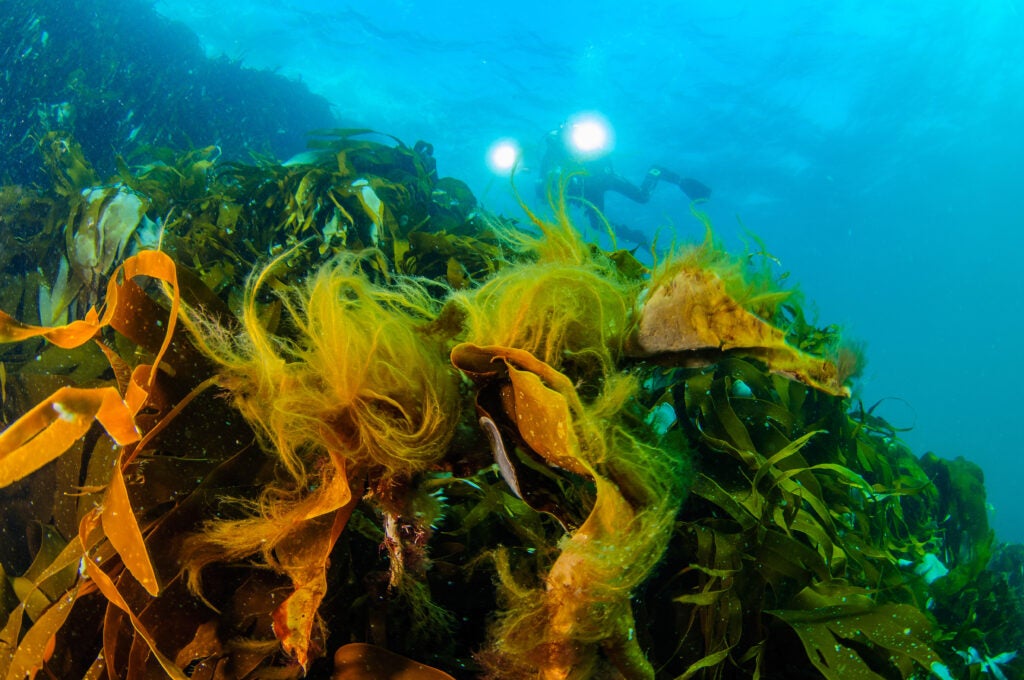July 21, 2025
5 Threatened ocean species, habitats and their main threats.
Marine animals and habitats in European waters face several threats driven by a combination of human activities, including climate change, and destructive fishing practices such as bottom trawling and overfishing. These threats not only endanger marine biodiversity but also undermine the health and resilience of the ocean.
Below are five threatened ocean species and habitats, each representing a different aspect of how human activity affects the environment.

© OCEANA / Juan Cuetos
Sea Turtles
Threats: Bycatch, plastic pollution, habitat loss
Sea turtles are threatened by a wide range of human activities. One of the most serious is bycatch, which occurs when turtles are accidentally caught in fishing gear (trawl nets or longlines), targeting other species. They are also harmed by plastic pollution, coastal development, and the degradation of nesting beaches. All seven sea turtle species are assessed by the IUCN Red List, with several considered endangered or critically endangered.

© OCEANA
Sharks
Threats: Industrial fishing, shark finning, bycatch
As apex predators, sharks play a vital role in maintaining balance in marine ecosystems. Many shark species are in steep decline due to overfishing, both targeted and as bycatch, the unintentional capture of non-target species. Practices such as shark finning, where sharks are caught, their fins removed, and the rest discarded, still take place in some regions of the world have devastated populations. Species such as the tope shark (Galeorhinus galeus) are now critically endangered.

© OCEANA / Juan Cuetos
Crustaceans
Threats: overfishing, habitat destruction, climate change
Crustaceans such as crabs, lobsters, and shrimps are essential to marine ecosystems and support valuable fisheries in European waters. Many of these species are threatened by overfishing and habitat destruction, particularly from bottom trawling, which disrupts the seabed where they feed and reproduce. Some crustacean populations are also declining due to rising sea temperatures and ocean acidification; both linked to climate change. Managing crustacean stocks sustainably and protecting their habitats is critical for the health of coastal ecosystems and the future of fisheries.

© OCEANA
Deep-sea Corals
Threats: Bottom trawling, climate change, industrial activities
Bottom trawling, a destructive fishing practice that involves dragging heavy nets across the seafloor, causes severe damage to fragile deep-sea ecosystems. Industrial activities such as oil and gas exploration, seabed mining, and underwater infrastructure development further threaten these habitats. In addition, climate change is affecting deep-sea environments by altering ocean currents, reducing oxygen levels, and increasing ocean acidification, which can weaken coral structures and reduce their ability to recover. Cold-water corals, which can take centuries to recover, are especially vulnerable. These habitats serve as nurseries, feeding grounds, and shelter for many marine species.

© OCEANA / Juan Cuetos
Underwater Forests
Threats: Habitat destruction, pollution, coastal development, bottom trawling
Underwater forests, such as seagrass meadows and kelp forests, are vital marine habitats found in shallow coastal waters. These ecosystems support biodiversity, store carbon, and help stabilise the seafloor. However, they are under increasing pressure from pollution, sediment runoff, coastal development, anchoring, and destructive fishing practices, including bottom trawling. When these habitats are damaged, it affects the many species that depend on them for shelter, breeding, feeding, and weakens the ocean’s ability to buffer climate impacts.
Conclusion
The threats facing marine life are interconnected. Overfishing weakens populations and ecosystems, making them more vulnerable to climate change. Bottom trawling destroys essential habitats such as deep-sea corals and underwater forests, putting many threatened ocean species at even greater risk.. Protecting the ocean means addressing these threats and making the necessary steps to ensure the abundance of marine life through designating more marine protected areas (MPAs), stronger fishing regulations, enforcing and putting a stop to illegal fishing practices. We can all work together to take action.

